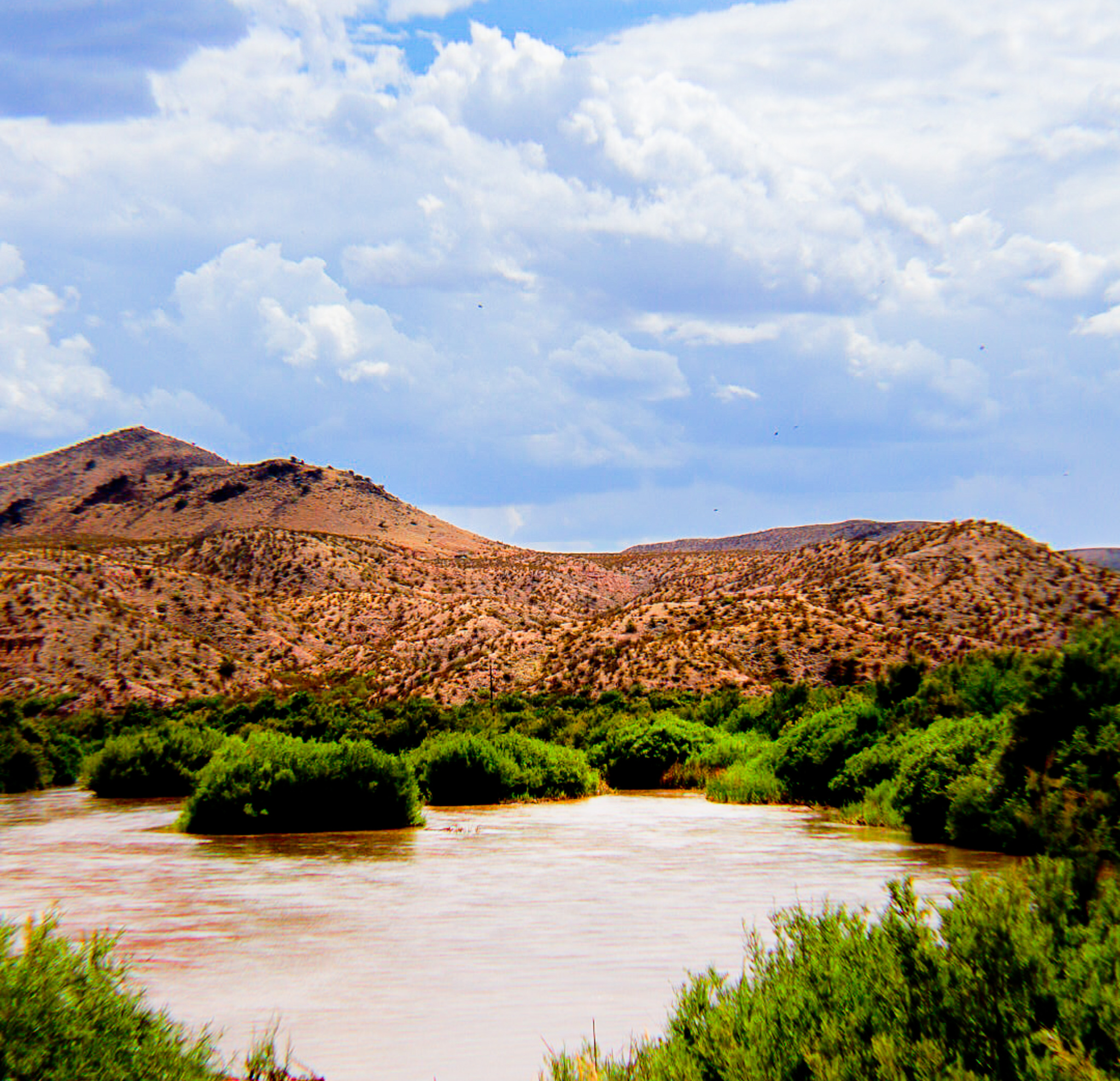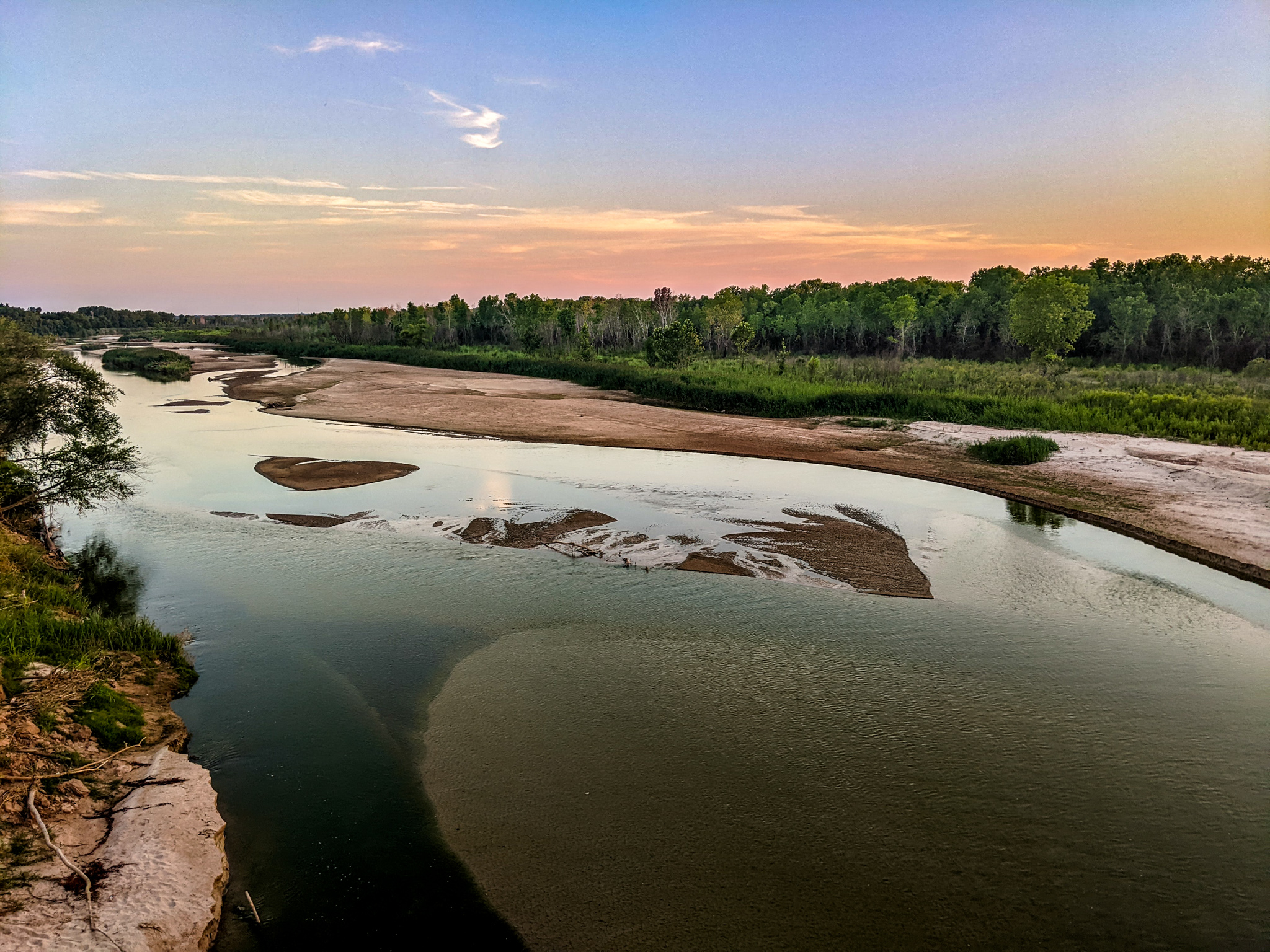Several major rivers run through the South Central CASC region. The largest, and most significant are the Rio Grande, the Red River, the Canadian River, as well as others. These rivers are essential for many reasons to these systems – people, wildlife, and general ecology, to start with. A number of climate stressors exist in these systems including drought, declining water availability, and impact on the flora and fauna of the surrounding and downstream regions they inhabit. The remainder of this page will highlight the research that has been done, or is ongoing, for these rivers as well as tangential research within the region related to other rivers and flora and fauna within these rivers.
The Rio Grande
This river begins in southern Colorado, flows southward through New Mexico and into Texas eventually forming the border between the United States and Mexico. The River is very important as a source of drinking water for many municipalities, as well as the numerous irrigation uses along the way. Due to these high water uses only about 20% of the water in this river eventually makes its way into the Gulf. As the climate is shifting, the snow-packed mountain tops that typically feed the river are shrinking, and increased evaporation is leaving less, and saltier, water available downstream.

Photo courtesy of Codie Winn
South Central CASC Funded Projects related to the Rio Grande
2019
Samuel Solis Sandoval
2019
New Paradigms for Environmental Flow Allocation in the Middle Rio Grande Basin under a Changing Climate
Ali Mirchi
2018
Victoria Stengel (was Delbert Humberson)
2018
Dave Moeser (Kyle Douglas Mankin)
2016
David Gutzler
2015
Jack Friedman
2015
Assessing the State of Water Resource Knowledge and Tools for Future Planning in the Rio Lower Grande-Rio Bravo Basin
Samuel Solis
The Red River
The Red River is the second largest river in the southern great plains and is also a salty river due to sea salt deposits from ancient seas in the region. It begins its journey in the Texas Panhandle from two main tributaries which flow southwestward into Oklahoma where they merge into the Red River Proper and eventually form the border between Oklahoma and Texas.

Courtesy of the USGS/Oklahoma-Texas water science center
South Central CASC Funded Projects related to the Red River
2021
Jason Vogel
2017
Balancing Water Usage and Ecosystem Outcomes Under Drought and Climate Change: Enhancing an Optimization Model for the Red River
Thomas Neeson
2015
Ming Xue
2013
Andrews/Grout (Vieux)
The Canadian River
The Canadian River is the longest tributary of the Arkansas River. It begins in Colorado and flows through New Mexico, the Texas Panhandle, and Oklahoma, where it then discharges into the main branch of the Arkansas River.

South Central CASC Funded Projects related to the Canadian River
2020
Newakis Weber
(Jennifer Bryant/Wayne Kellogg)
Other Rivers and Research Related to Rivers
While the rivers previously discussed are of significant importance to our region, there are many other bodies of water that flow through or border our region, and/or contain plant and animal species that are dependent on them as well. Other related research is outlined below.
2021
Precipitation Climatology of the Mississippi River Basin landscape: Examining Extremes within the Basin with an Eye Toward Climate Change
Irenea Lodangco (Renee McPherson)
2021
Planning for a fresher future: Implications of river management practices on saltmarsh restoration projects in coastal Louisiana
Michael Polito